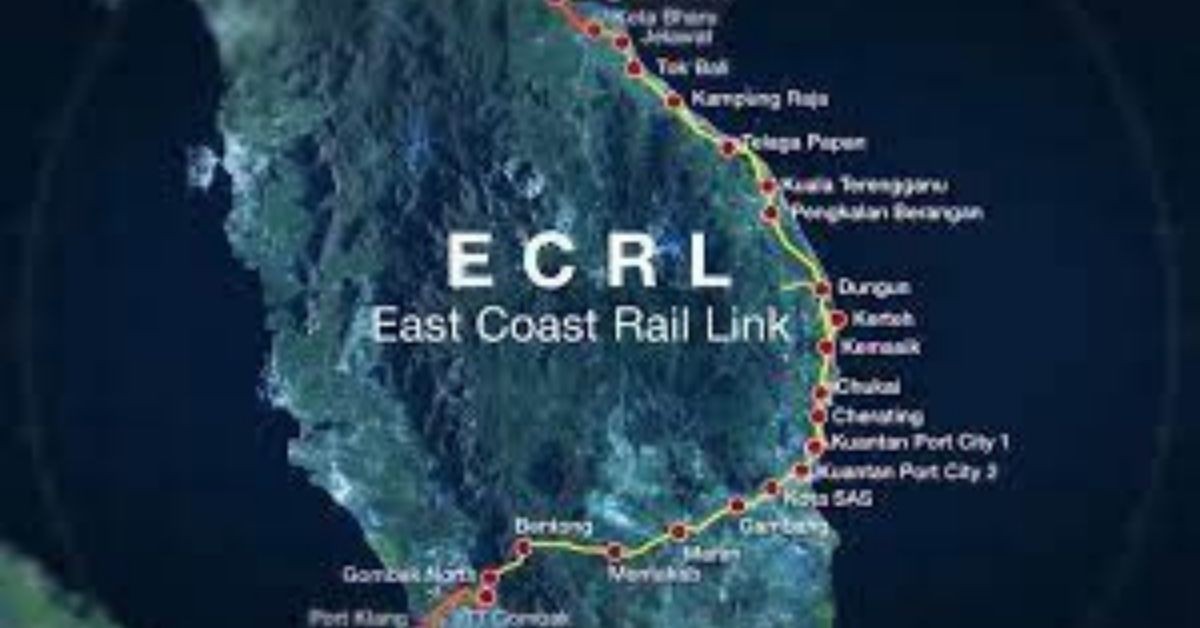The Malaysian government will reinstate the original alignment for the East Coast Rail Link (ECRL), which was first approved by the Barisan Nasional (BN) government in 2017.
Transport minister Wee Ka Siong said in a press conference on Monday (Apr 5) that the revised Section C of the ECRL will be on the northern side of the peninsula, adding that this arrangement would be more “cost-effective”.
The minister explained that the latest alignment, now known as ECRL 3.0, would allow for a higher freight tonnage as compared to the southern alignment previously planned by the Pakatan Harapan (PH) government. The new alignment incorporates the Serendah Bypass infrastructure in Selangor state in the scope of the project.
“The north route gives better value for money due to better connectivity for cargo hubs and improved cargo capacity for the current rail network.
“ The re-implementation of the northern alignment will steer the ECRL to be viable infrastructure in line with its revenue ratio of 70 per cent freight and 30 per cent passengers,” he said.
He said that the Serendah Bypass will further drive freight volume for the ECRL as upon operation, it will cater to cargo both from the East Coast states and existing Keretapi Tanah Melayu Berhad (KTMB) lines.
Research shows that ECRL 3.0 will bring 26.12 million tonnes of cargo for the first year of operation through the northern route in comparison to the estimated cargo of 9 million tonnes of cargo in the same period for the southern route.
“Also the bypass will serve as a significant freight relief line and solve rail cargo congestion as the route will not go through the Kuala Lumpur city centre,” he said, adding that this was also an improvement in terms of safety.
Commenting on the cost issue, Dr Wee said that although the new alignment was similar to what was decided by BN earlier, the cost has been reduced significantly.
“The estimated cost for ECRL 3.0 is RM50 billion (US$12.074 billion). This cost is less than ECRL 2.0 during Pakatan Harapan rule which was through the southern route because the Serendah Bypass was separate.
“The project under Pakatan Harapan was projected to cost RM47.37 billion, whereas for ECRL 1.0 by Barisan, there were two phases planned, RM46 billion for phase one and RM9 billion for phase two which would have amounted to RM55 billion.
“Some may say RM50 billion is more than RM47 billion, but I say this is two in one as we are building two infrastructure (including the bypass) for the price of one,” explained Dr Wee.
He added that the ECRL was currently being constructed at a rapid pace. It is expected to be fully operational in 2027.
After the PH government came to power in May 2018, it suspended the ECRL project, citing high cost as a reason.
In April 2019, the PH government and Beijing agreed to proceed with the ECRL, slashing more than 30 per cent off the initial projected cost for a shorter route.
In September last year, deputy transport minister Hasbi Habibollah said in parliament that the Perikatan Nasional government plans to revert to the original route detailed in 2017 but with minor changes around the south of Kuala Lumpur.
“The government will renegotiate with the Chinese government and the main contractor of the project to ascertain the cost implication and project implementation schedule,” Mr Hasbi said then.
Source : Channel News Asia








